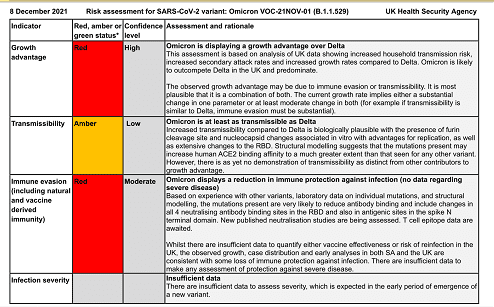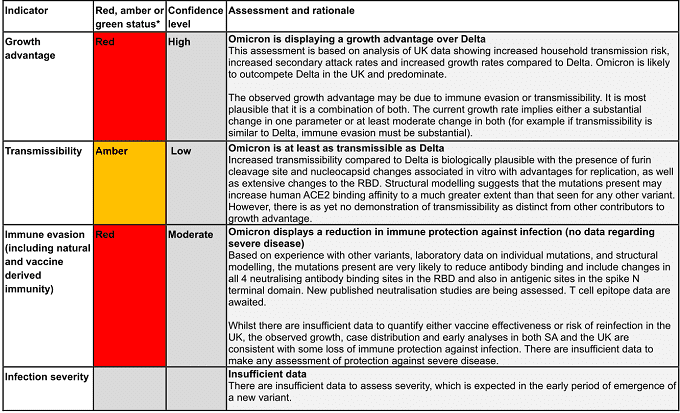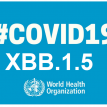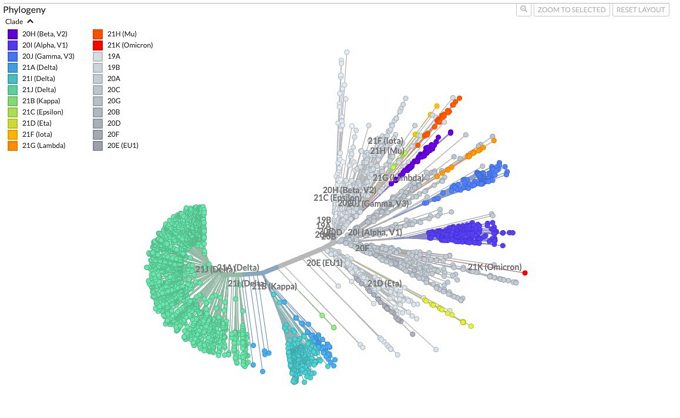
UKHSA updated risk assessment for Omicron variant, 8th December 2021
The UK government has updated its risk assessment for the Omicron variant today. The variant looks like it could be more of a problem than previously anticipated.

Growth advantage: Red
Omicron is displaying a growth advantage over Delta. This assessment is based on analysis of UK data showing increased household transmission risk, increased secondary attack rates and increased growth rates compared to Delta. Omicron is likely to outcompete Delta in the UK and predominate.
The observed growth advantage may be due to immune evasion or transmissibility. It is most plausible that it is a combination of both. The current growth rate implies either a substantial change in one parameter or at least moderate change in both (for example if transmissibility is similar to Delta, immune evasion must be substantial).
Transmissibility: Amber
Omicron is at least as transmissible as Delta. Increased transmissibility compared to Delta is biologically plausible with the presence of furin cleavage site and nucleocapsid changes associated in vitro with advantages for replication, as well as extensive changes to the RBD. Structural modelling suggests that the mutations present may increase human ACE2 binding affinity to a much greater extent than that seen for any other variant. However, there is as yet no demonstration of transmissibility as distinct from other contributors to growth advantage.
Immune evasion (including natural and vaccine derived immunity): Red
Omicron displays a reduction in immune protection against infection (no data regarding
severe disease). Based on experience with other variants, laboratory data on individual mutations, and structural modelling, the mutations present are very likely to reduce antibody binding and include changes in all 4 neutralising antibody binding sites in the RBD and also in antigenic sites in the spike N terminal domain. New published neutralisation studies are being assessed. T cell epitope data are awaited.
Whilst there are insufficient data to quantify either vaccine effectiveness or risk of reinfection in the UK, the observed growth, case distribution and early analyses in both SA and the UK are consistent with some loss of immune protection against infection. There are insufficient data to make any assessment of protection against severe disease.
Infection severity: Insufficient data.
There are insufficient data to assess severity, which is expected in the early period of emergence of a new variant.
UKHSA Risk Assessment download
The previous UKHSA risk assessment for Omicron can be found below:





